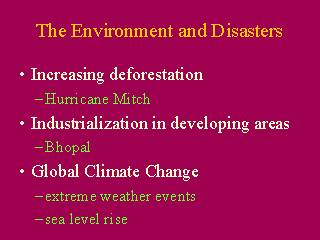|
|
|
|
front
|1
|2
|3
|4
|5
|6
|7
|8
|9
|10
|11
|12
|13
|14
|15
|16
|17
|18
|19
|20
|21
|22
|23
|24
|25
|26
|27
|28
|29
|30
|31
|32
|33
|34
|35
|36
|37
|38
|
 |
Another example is the increase in consumption of fossil fuels with industrialization. Global climate change from the build-up of greenhouse gases may lead to a greater frequency of extreme weather events (heat waves) in the future, as well as sea level rise. Several existing coastlines may be threatened in this event. |